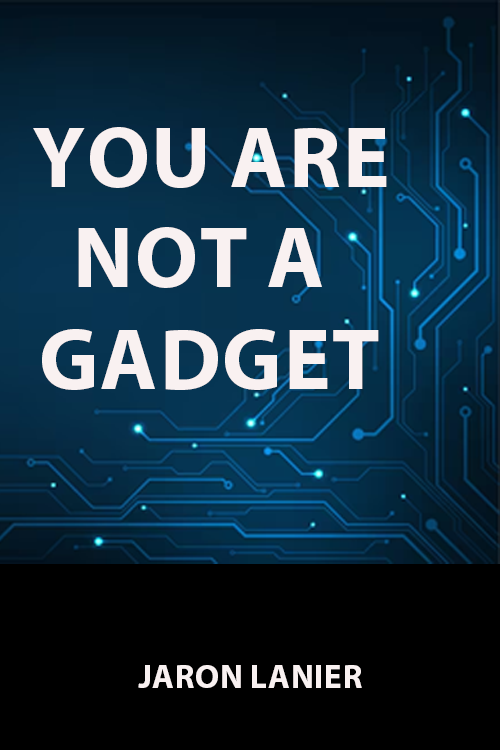About this Book
In “You Are Not a Gadget”, Jaron Lanier critiques the impact of technology on creativity, individuality, and labor. He explores concepts like "locked-in" technology, where outdated systems hinder innovation, and the rise of "free culture," which diminishes original content in favor of crowd-sourced mash-ups. Lanier warns that collective knowledge can overshadow individual creativity, leading to a homogenized culture and economic disparity, as technology benefits the few over the many. He advocates for protecting creators' rights and ensuring fair compensation through innovative solutions, emphasizing the need to prioritize human intelligence and originality in an increasingly digital age.
2010
Self-Help
0 Min
Conclusion
7 Key Points
Conclusion
Technology has changed our lives, but it comes with challenges. We must find ways to protect individual creativity and ensure that creators are rewarded. By valuing originality and encouraging unique contributions, we can create a better digital landscape for everyone.
Abstract
In “You Are Not a Gadget”, Jaron Lanier critiques the impact of technology on creativity, individuality, and labor. He explores concepts like "locked-in" technology, where outdated systems hinder innovation, and the rise of "free culture," which diminishes original content in favor of crowd-sourced mash-ups. Lanier warns that collective knowledge can overshadow individual creativity, leading to a homogenized culture and economic disparity, as technology benefits the few over the many. He advocates for protecting creators' rights and ensuring fair compensation through innovative solutions, emphasizing the need to prioritize human intelligence and originality in an increasingly digital age.
Key Points
- Early technology designs can create systems that are hard to change and hinder future innovation.
- Complex systems, like infrastructure, become difficult to improve because of their size and the limitations of earlier technology.
- Digital platforms often reduce individuality by simplifying personal expression into basic choices.
- While collective knowledge is valuable, individual creativity tends to offer deeper insights and more impactful contributions.
- Anonymity online can lead to poor behavior, but solutions like accountability can encourage better interactions.
- The vast amount of free content online makes it hard for creators to gain visibility or make money.
- Technology's increasing automation of jobs may worsen economic inequality, benefiting the wealthy while leaving many without work.
Summary
Initial Design Can Stifle Tech Innovation
In the early 1980s, inventors developed a way to express musical notes electronically, called "MIDI." This invention quickly became popular and was used in many computers and electronic instruments. However, as technology advanced, people faced a big issue when trying to update the "MIDI" system. Because it had been integrated into so many devices, modifying it would mean changing how all those technologies worked, especially music systems in computers worldwide.
This problem is known as "locked-in" technology, where an early, widespread design becomes difficult to change. These initial designs are often imperfect, influenced by the limits of technology at the time or whatever was the simplest solution for the inventor. The more complicated a system is, the bigger the problems caused by this lock-in, as changing one part may require altering many interconnected components.
A good example is the London Underground, which was built using the limited technology of the 19th and early 20th centuries. One major issue is the narrow tunnels, which are too small to fit air conditioning units on trains. Because t
Share:




